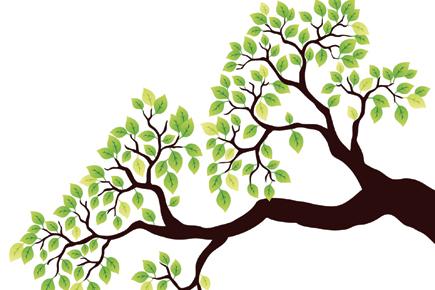Mumbai has been in the grip of redevelopment fever for some years no

Trees

Mumbai has been in the grip of redevelopment fever for some years now. You know the drill—you live in an oldish building, an appointed builder knocks down the building, you live on rent elsewhere, and in two-and-a-half years, you get a spanking new building. Your flat is a chunk bigger than the old one, and the builder sells the flats on additional floors, so it’s a win-win. All in theory, at least. This was also the subject of Aravind Adiga’s masterfully observed Last Man in Tower, set in Vishram Society in Vakola, Santa Cruz East, a stone’s throw from my flat.

For Representational Purpose Oonly
I’ve been recently in the throes of this rigmarole myself, as the apartment building in which I grew up, is undergoing redevelopment. These things can drag on for years, but the last society meeting was held in the stilt area of the building, whose walls were still standing, but large holes had been gouged, where once were windows. The meeting ended with the usual question—about when the new building might actually be ready—being answered by shrugs. The residents finished their chais and colas, got into their cars and left.
I walked slowly around the society. I looked up at our study and remembered how my sister and I mugged away during our school years, our desks side-by-side. In my parents’ bedroom stood a dressing table mirror, before which I would preen as a kid, with lipstick on my cheeks and lips, pretending to be very grown up. In the kitchen, my mum was always peeking out of the window, waiting for the postman, while stirring pots for lunch.
I said fond farewells to all the trees in the compound. Saying goodbye to a beloved tree is as difficult as saying goodbye to a pet. They instinctively know it is bad news, they just don’t know how long it will be so—and you don’t have an answer. Does anyone think about who will water all the plants and feed all the “society dogs and cats” after a building is demolished?
I said goodbye to the laburnum (amaltas) trees, that I had planted as seeds many years ago. Next came the sonchampa. The little saplings I had planted had grown into elegant trees two storeys high, with beautiful, scented yellow blossoms. Years ago, when I was working in Paris for a year, my dad and I would write long letters to each other; his came in tiny handwriting that we called “muyye pai”— Konkani for ant’s feet— so that he could cram more news in a single blue aerogramme. In one of his letters, he wrote that one day he heard a “kuin kuin” howling sound from my room.
He went to investigate, but could find nothing. He soon realised “it was the sonchampa tree outside your window. It’s missing you, no?” he wrote. I felt the sting of salt in my eyes, as I realised how much he—as much as the tree—missed me, and I, him.
I remembered the glyricidia tree, four storeys high, with its beautiful, Japanese cherry blossom-like boughs. I’d planted the seeds collected from under the trees outside Sterling Cinema, where I’d bunked college to watch a movie. And nothing is sadder than an amla tree, with ripe yellow gooseberries, and no small boys to knock them off. Now, contrary to public assumption, plants and trees are highly intelligent, sentient and even emotional beings, according to The Secret Life of Plants by Peter Tompkins and Christopher Bird. The book describes the experiments of Cleve Backster, who discovered that a plant that had witnessed the murder (by stomping) of another plant, could pick out the killer from a line-up of six suspects, by registering electrical activity on a hooked-up galvanometer, when the murderer was brought before it. (Why did nobody ask the trees on Hill Road in the Salman Khan case?).
So I’m sure the trees know that doomsday is near; that all those who loved them have abandoned them to their fate. All the more poignant, then, that they were the epitome of carpe diem— seize the day — their leaves fluttering in the sun, inviting barbets, mynahs, sun birds, tailor birds, golden orioles and butterflies to gambol and party in their midst. Truly, we have much more to learn from trees, than we imagine.
Meenakshi Shedde is South Asia Consultant to the Berlin Film Festival, an award-winning critic, curator to festivals worldwide, and journalist. She can be reached at meenakshishedde@gmail.com.
The views expressed in this column are the individual’s and don’t represent those of the paper.
 Subscribe today by clicking the link and stay updated with the latest news!" Click here!
Subscribe today by clicking the link and stay updated with the latest news!" Click here!









